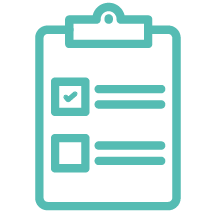Evaluation Indicators: A Comprehensive Guide to Assessing Project and Program Results and Impacts
Evaluation indicators are essential tools that help organizations measure and assess the results and impacts of their projects and programs. They provide valuable insights into the effectiveness, efficiency, relevance, sustainability, and scalability of development and humanitarian interventions. In this unique and repeated article, we will explore the fundamentals of evaluation indicators, their types, their significance, and best practices for their implementation. The following topics will be covered:
- Understanding Evaluation Indicators
- Developing an Evaluation Indicators Framework
- Types of Evaluation Indicators
- Selecting and Prioritizing Evaluation Indicators
- Data Collection and Analysis for Evaluation Indicators
- Communicating and Reporting Evaluation Indicators
- Using Evaluation Indicators for Learning and Improvement
- Challenges and Opportunities in Evaluation Indicators
1. Understanding Evaluation Indicators
Evaluation is a systematic process of assessing the design, implementation, results, and impacts of projects and programs to provide evidence-based information for decision-making, learning, and accountability. Evaluation indicators are specific, measurable, and time-bound values that enable organizations to assess the extent to which their projects and programs have achieved their intended objectives and contributed to broader development goals.
Evaluation indicators can be quantitative, involving numerical data, or qualitative, focusing on non-numerical attributes such as opinions, perceptions, or behaviors. They can also be process, product, or impact indicators, depending on their focus and the stage of the project or program lifecycle they evaluate. Additionally, evaluation indicators can be categorized based on the evaluation criteria they address, such as effectiveness, efficiency, relevance, sustainability, or scalability.
2. Developing an Evaluation Indicators Framework
An evaluation indicators framework is a structured and systematic approach to selecting, organizing, and managing evaluation indicators for a project or program. It typically includes the following components:
- Evaluation Objectives: Clearly defined and measurable objectives that outline the intended results and impacts of a project or program, as well as the evaluation criteria to be assessed.
- Indicators: Specific, measurable, and time-bound values that enable the assessment of project or program results and impacts against the evaluation objectives and criteria.
- Targets: Quantitative or qualitative benchmarks that represent the desired level of achievement for each indicator, based on evidence, stakeholder expectations, or organizational capacities.
- Data Sources: The primary and secondary sources of data for each indicator, such as surveys, interviews, administrative records, or external databases.
- Data Collection Methods: The methods and tools used to collect, validate, and analyze data for each indicator, such as questionnaires, focus group discussions, observation, or data mining.
- Data Management Systems: The systems and processes used to store, process, and manage data for each indicator, including data entry, quality assurance, data security, and data sharing.
- Reporting and Communication Mechanisms: The formats, channels, and frequency of reporting and communicating evaluation indicator results to stakeholders, including beneficiaries, partners, and donors.
3. Types of Evaluation Indicators
There are various types of evaluation indicators, each with a specific focus and purpose in assessing project and program results and impacts. Some common types include:
- Process Indicators: Measure the quality and effectiveness of the processes used to plan, implement, monitor, and evaluate a project or program.
- Product Indicators: Measure the direct products or services generated by a project or program, such as training sessions, beneficiaries reached, or materials distributed.
- Outcome Indicators: Measure the intermediate effects or changes resulting from a project or program, such as improvements in knowledge, attitudes, skills, behaviors, or conditions.
- Impact Indicators: Measure the long-term, sustainable changes in social, economic, or environmental conditions attributable to a project or program.
- Efficiency Indicators: Measure the cost-effectiveness of a project or program, comparing the resources invested to the results and impacts achieved.
- Relevance Indicators: Measure the extent to which a project or program addresses the needs, priorities, and expectations of its beneficiaries, partners, and stakeholders.
- Sustainability Indicators: Measure the likelihood that the results and impacts of a project or program will continue beyond its completion, considering factors such as resource availability, institutional capacity, and stakeholder ownership.
- Scalability Indicators: Measure the potential for a project or program to be expanded, replicated, or adapted to other contexts, considering factors such as cost, effectiveness, and applicability.
4. Selecting and Prioritizing Evaluation Indicators
To ensure the effectiveness and efficiency of evaluation indicators, organizations should consider the following criteria when selecting and prioritizing them:
- Relevance: The extent to which an indicator aligns with the evaluation objectives, criteria, and stakeholder interests.
- Measurability: The ease and accuracy with which an indicator can be measured, using available data sources, methods, and tools.
- Reliability: The consistency and stability of an indicatorover time, across different data sources, methods, and contexts.
- Validity: The degree to which an indicator measures what it is intended to measure, reflecting the true results and impacts of a project or program.
- Comparability: The ability of an indicator to be compared across different projects, programs, organizations, or time periods.
- Sensitivity: The ability of an indicator to detect changes or differences in the results and impacts of a project or program.
- Timeliness: The availability and frequency of data for an indicator, ensuring its usefulness for decision-making, learning, and accountability.
- Cost-effectiveness: The balance between the resources required to measure and report an indicator and the value it provides in terms of insights, evidence, and influence.
5. Data Collection and Analysis for Evaluation Indicators
Data collection and analysis are critical steps in the evaluation process, enabling organizations to generate evidence and insights about the results and impacts of their projects and programs. Some key considerations for data collection and analysis for evaluation indicators include:
- Data Collection Planning: Develop a detailed data collection plan that outlines the objectives, indicators, data sources, data collection methods, and resources required for each evaluation indicator.
- Data Collection Tools: Design and pilot test data collection tools, such as questionnaires, interview guides, observation checklists, or data extraction templates, ensuring their clarity, relevance, and alignment with the evaluation indicators.
- Data Quality Assurance: Implement quality assurance mechanisms, such as training, supervision, data validation, or data cross-checking, to ensure the accuracy, reliability, validity, and integrity of the data collected for evaluation indicators.
- Data Analysis: Conduct data analysis, using descriptive, inferential, or exploratory techniques, to identify patterns, trends, relationships, or correlations among the evaluation indicators.
- Data Interpretation: Interpret the data analysis results, considering the context, assumptions, limitations, and uncertainties, to draw conclusions and recommendations about the project or program’s results and impacts.
6. Communicating and Reporting Evaluation Indicators
Effective communication and reporting of evaluation indicators are essential for promoting transparency, accountability, learning, and decision-making among project and program stakeholders. Some best practices for communicating and reporting evaluation indicators include:
- Tailor Communication: Customize the content, format, and channel of communication and reporting to the needs, preferences, and expectations of different stakeholder groups, such as beneficiaries, partners, donors, or policymakers.
- Be Clear and Concise: Present evaluation indicator results in a clear, concise, and accessible manner, using simple language, visual aids, or summaries to facilitate understanding and interpretation.
- Highlight Key Messages: Emphasize the key messages, findings, and insights from the evaluation indicators, addressing the main evaluation questions, objectives, and criteria.
- Share Lessons Learned: Share the lessons learned, challenges faced, and good practices identified during the evaluation process, fostering learning, adaptation, and improvement.
- Ensure Timely Reporting: Provide regular, timely, and up-to-date reporting of evaluation indicator results, enabling stakeholders to make informed decisions, monitor progress, and address emerging issues.
7. Using Evaluation Indicators for Learning and Improvement
Evaluation indicators can serve as powerful tools for learning and improvement, helping organizations to enhance the design, implementation, results, and impacts of their projects and programs. Some strategies for using evaluation indicators for learning and improvement include:
- Conduct Evaluability Assessments: Assess the readiness and capacity of projects and programs to be evaluated, identifying gaps, challenges, or opportunities in their evaluation indicator frameworks, data systems, or learning mechanisms.
- Integrate Feedback Loops: Establish feedback loops between the evaluation process and project or program management, ensuring that evaluation indicator results are used to inform decision-making, planning, and resource allocation.
- Promote a Culture of Learning: Foster a culture of learning, curiosity, and innovation within the organization, encouraging staff to use evaluation indicator results for reflection, learning, and action.
- Facilitate Learning Events: Organize learning events, such as workshops, webinars, or conferences, to share and discuss evaluation indicator results, challenges, and good practices, fostering collective learning and improvement.
8. Challenges and Opportunities in Evaluation Indicators
Evaluation indicators present both challenges and opportunities for organizations seeking to assess and enhance the results and impacts of their projects and programs. Some common challenges include data quality, data availability, data disaggregation, indicator alignment, and resource constraints. However, these challenges can be addressed by adopting innovative approaches, technologies, and partnerships, leveraging the potential of big data, geospatial data, mobile data, or citizen-generated data, as well as embracing data-driven decision-making, adaptive management, and results-based management.
In conclusion, evaluation indicators are essential tools for assessing the results and impacts of projects and programs, providing valuable insights into their effectiveness, efficiency, relevance, sustainability, and scalability. By developing robust evaluation indicator frameworks, selecting and prioritizing relevant and measurable indicators, collecting and analyzing data rigorously, communicating








